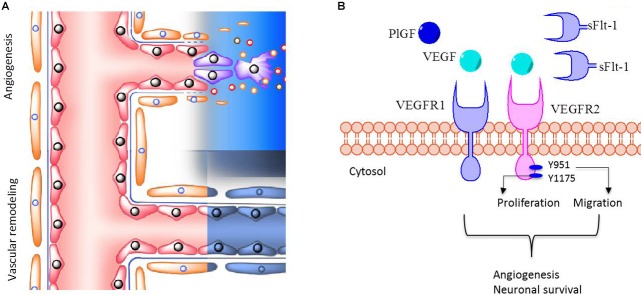FIGURE 2.
VEGFR1 and VEGFR2 in brain vessel formation. (A) The extent of perfusion of brain tissue depends on both angiogenesis and vascular remodeling processes, which are mediated by pro- and anti-angiogenic factors. (B) VEGF and PlGF activate VEGFR1 and VEGFR2. Phosphorylation of tyrosine 951 (Y951) or Y1175 is associated with activation of VEGFR2, leading preferentially to cell migration or cell proliferation, respectively. These regulatory mechanisms are involved in angiogenesis and neuronal survival. In contrast, sFlt-1 prevents the binding of VEGF and PlGF to VEGFRs, thus decreasing their pro-angiogenic and neuronal survival activity. In this manuscript it is postulated that children born to preeclampsia exhibit a reduced number of blood vessels in the brain cortex, through impaired angiogenesis and/or increased vascular remodeling. We also propose that the underling mechanism might involve dysregulation in VEGFR2 activation due to high sFlt-1 circulating levels in preeclampsia.

